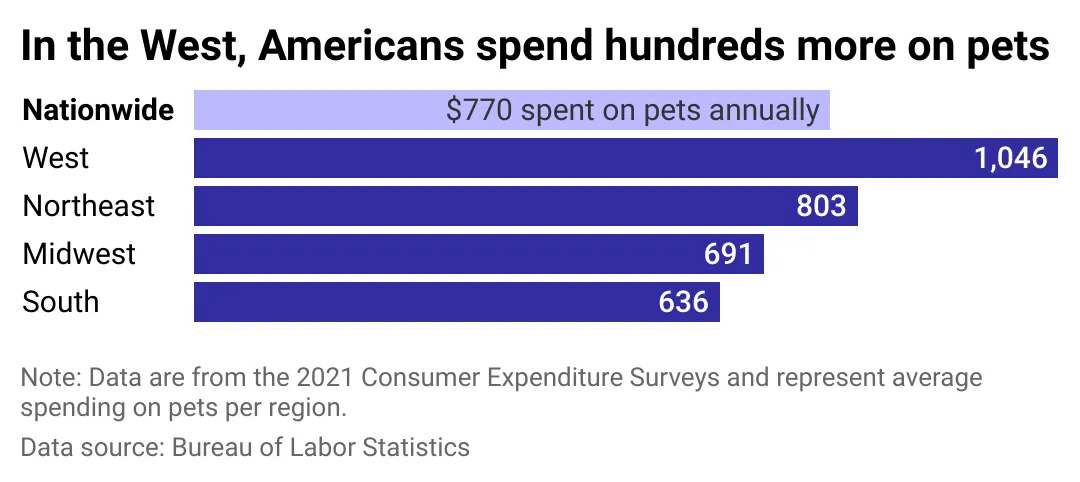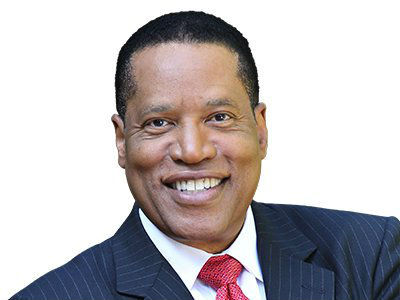Where pet owners in the US spend the most on their pets
Pets

Audio By Carbonatix
By Ali Hickerson, Stacker

Where pet owners in the US spend the most on their pets
The term "fur babies" often elicits complicated reactions from parents and animal lovers alike, but it's a fact that birth rates in the U.S. have declined by half from 1950 to 2023. There are now more pets than children in American households.
eTailPet compared pet spending across the country and analyzed general pet trends in the various regions, using data from the Bureau of Labor Statistics Consumer Expenditure Surveys
During the pandemic, from March 2020 to May 2021 alone, roughly 1 in 5 households in the U.S. acquired a dog or cat, according to an American Society for the Prevention of Cruelty to Animals survey. The American Pet Products Association found that 2 in 3 U.S. households now own a pet, and about a third of these pet owners are millennials.
What's more, according to the APPA, Americans spent 51% more on their pets in 2022 than in 2018, partly because of inflation but also the consolidation of the veterinary industry. Most pet spending (42.5%) went toward food and treats, next to vet care and product sales (26.2%).
Half of the surveyed pet owners said they would spend more money on pet products made in the U.S. that have a brand name, are ethically sourced, BPA-free, and eco-friendly. More Americans also reported planning on purchases for pet tech that keep tabs on their loved ones, like electronic tracking devices and pet monitoring systems.
The trends in birth rates and pet ownership play a role in the increasing cost of pets. "As millennials become homeowners, delay having children, and increasingly have smaller families, they tend to spend more on their pets than older pet owners do, especially on premium food and services," Morgan Stanley equity analyst Simeon Gutman explained.
As more pet owners become more emotionally attached, Arthur Salisbury, the founder of pitbull blog Pittbulls Home, told MarketWatch Guides they are more willing to invest in things like a balanced diet, regular check-ups at the vet, training, and toys.
Overall, the average cost of a dog over its lifetime is staggering: $28,800. In California, it's 23.1% more at $35,452. Pet insurance, vet care, and dog food are most expensive there, too. MarketWatch Guides based their figures on the costs of owning a Labrador retriever, one of the country's most popular dogs, in 2022.

On average, people on the West Coast spend $276 more on pets
There are more pets on the West Coast, and compared to other regions in the U.S., owners in the West spend $276 more each year—the most relative to their average income—spending 1.1% of their income on pets, compared to 0.88% nationally.
Dogs are far and away the most common pets in the U.S. at 65.1 million owners, versus cat owners at 46.5 million, and the West and the Pacific top the list of dedicated dog owners, according to a Forbes Advisor survey.
Five of the top 10 states are in the region: Colorado, Alaska, Nevada, Washington, and Oregon. These owners were more willing to make professional, personal, and financial sacrifices, like moving to a more expensive home so their dog could have a yard or living on a tighter budget to accommodate their dog's expenses.
Another Forbes Advisor survey on "spoiled dogs" (dogs treated to extra TLC like home-cooked meals or outfits) found two of the top 10 states that ranked are on the West Coast: California and Washington, which came behind New York. Scores were determined by indicators such as spending more money on their dog's health and grooming than themselves, spending more on their dogs than their significant other, and bringing their dogs on vacation.
"People pamper pets more over here," says Emily Pellegrino, a resident living outside San Francisco, originally from Connecticut. She hypothesized West Coasters might spend more on pets than the rest of the country since fewer of her friends in the region have children and instead own pets due to the high cost of living. Pellegrino said spending on her family's two dogs has dropped since having two children.
Danielle Bentz, who has lived on the West and East coasts, says she has noticed that dog owners on the East Coast, particularly in New York City, seem more likely to spend money on dog walkers and doggy daycare than in the West. But "dogs on the West Coast are more integrated into the lives of their owners," she says, which means they are more likely to travel with their humans.
"I take Ola with me everywhere," said Brittany Hurst of Oregon, who recently took her dog on a trip to Alaska. "She doesn't just stay home and go on walks near my house. She goes on hikes, bike rides, surfing, skiing, camping...I probably spend more money on her because she needs gear to do all of those things."
Whether they're out adventuring with their owners or simply home chilling, pets on the West Coast strain a bit more on the pocket, but it's a price tag many are willing to pay.
Story editing by Carren Jao. Copy editing by Kristen Wegrzyn.
This story was produced by Rain and was produced and distributed in partnership with Stacker.

























